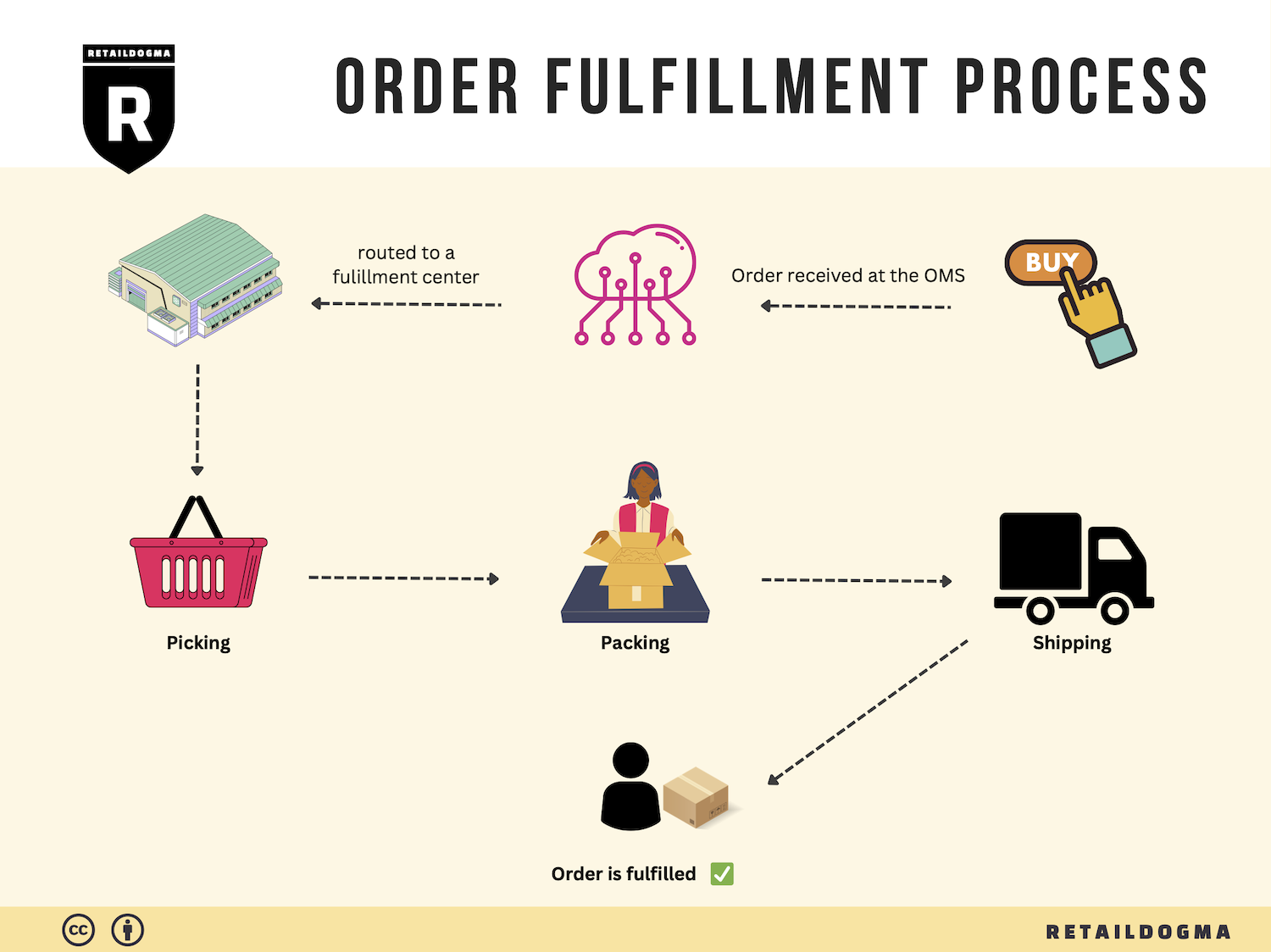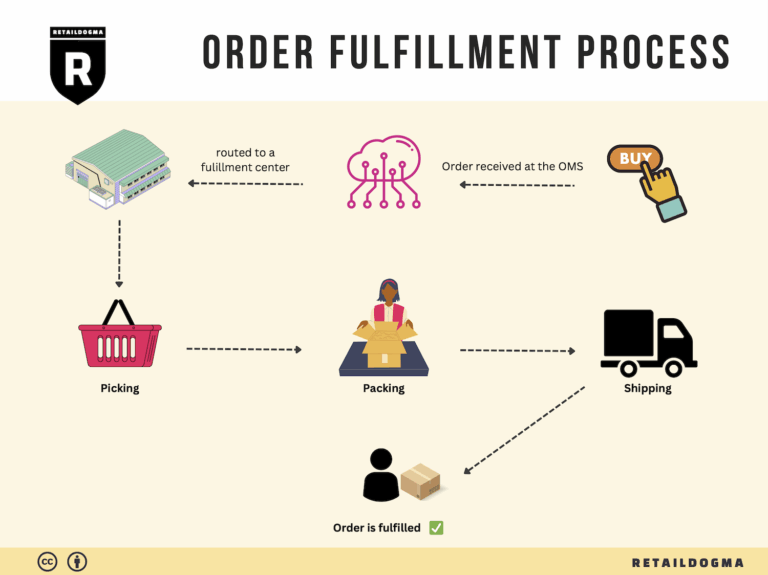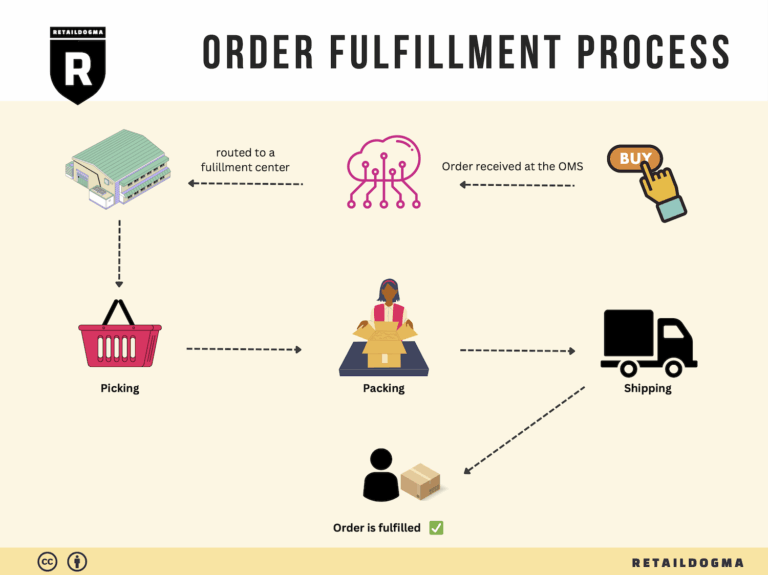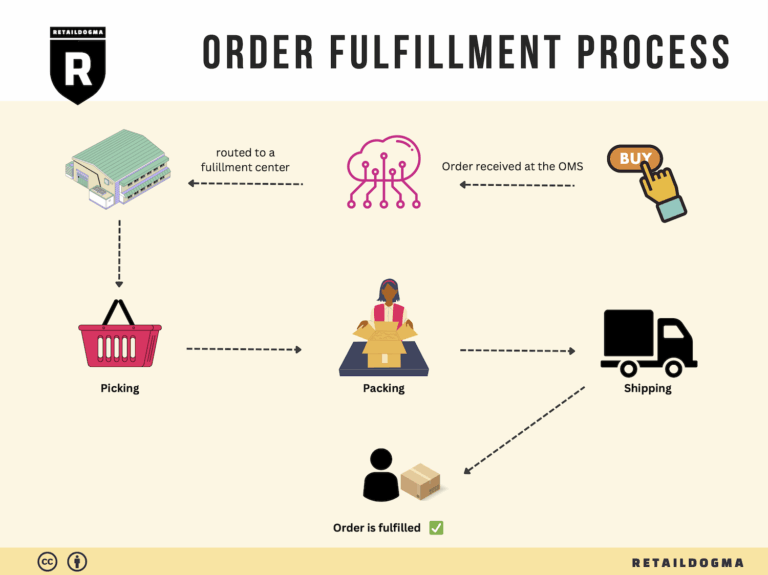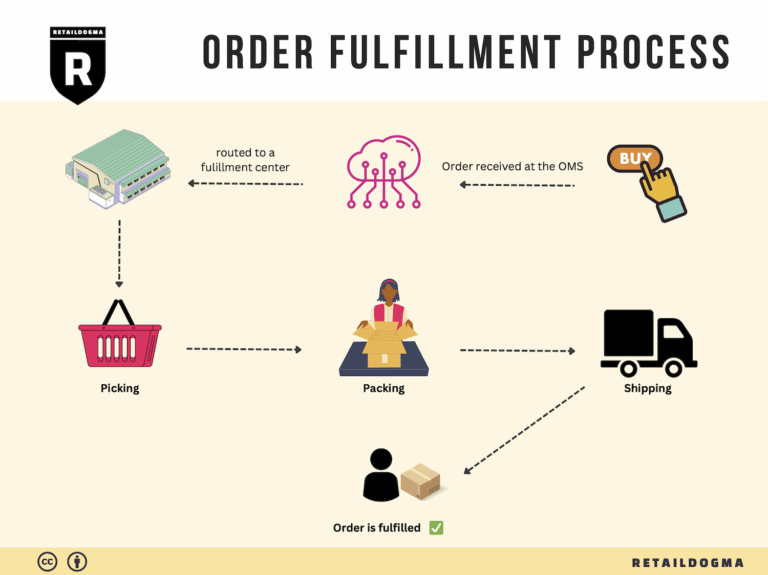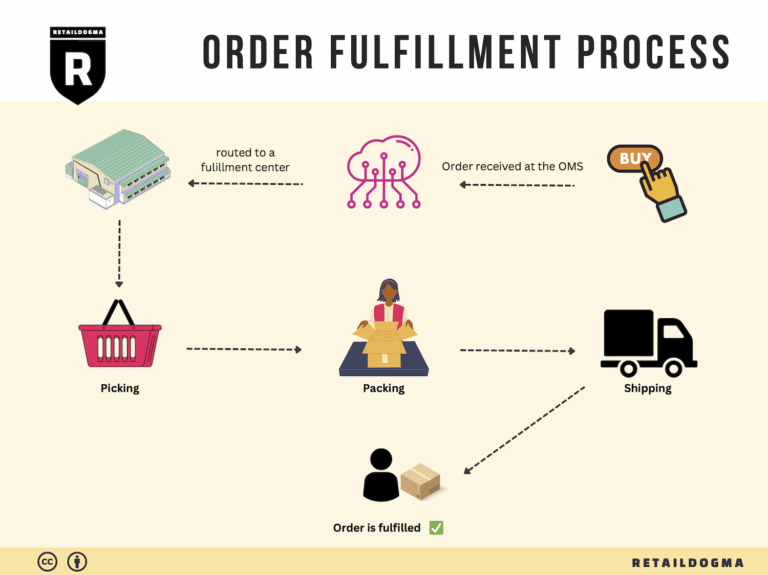How Order Fulfillment Works: A Step-by-Step Guide for Businesses
What is E-commerce Fulfillment? An Introduction for Growing Businesses
Understanding E-commerce Fulfillment: A Key to Scaling Your Business
As your online business grows, the excitement of increased sales can quickly turn into a daunting challenge, particularly when it comes to packing and shipping orders. Many entrepreneurs find themselves overwhelmed by the logistics involved in fulfilling orders efficiently and accurately. This is where e-commerce fulfillment comes into play. At its core, fulfillment is the process of getting a product from your warehouse to your customer’s doorstep. It encompasses everything from inventory management and order processing to packaging and shipping.
Navigating the complexities of fulfillment can be a significant hurdle for growing businesses. With various fulfillment models available, such as Third-Party Logistics (3PL) and Fulfillment by Amazon (FBA), choosing the right approach can be confusing. This guide aims to demystify the e-commerce fulfillment landscape by breaking down the different models available, the core services involved, and how to select the right fulfillment partner for your business.
What This Guide Will Cover
-
Fulfillment Models: We will explore the various fulfillment options, including in-house fulfillment, 3PL, FBA, and dropshipping. Each model has its advantages and disadvantages, and understanding these will help you determine which is best suited for your business needs.
-
Core Services: The guide will outline the essential services that fulfillment providers typically offer, such as inventory storage, order picking and packing, shipping, and returns management. Knowing what services are available can help you streamline your operations and improve customer satisfaction.
-
Choosing a Partner: Selecting the right fulfillment partner is critical for your business’s success. We’ll provide practical tips on what to look for in a partner, including their technology capabilities, reliability, and customer service standards.
-
Pricing: Understanding the costs associated with fulfillment is vital for maintaining your profit margins. We will break down common pricing structures and hidden fees, helping you make informed financial decisions.

Empowering Your Business
The ultimate goal of this guide is to empower you, the business owner, to make smart decisions about your logistics. By understanding the nuances of e-commerce fulfillment, you can focus on scaling your sales and enhancing your customer experience, rather than getting bogged down by operational challenges. With the right knowledge and resources at your disposal, you can turn fulfillment from a pain point into a competitive advantage for your growing business.
What You’ll Learn In This Guide
- What is E-commerce Fulfillment? An Introduction for Growing Businesses
- The Order Fulfillment Process: From ‘Buy’ Button to Customer’s Door
- Comparing Fulfillment Models: In-House vs. 3PL vs. Dropshipping
- A Deep Dive into Amazon FBA: Pros, Cons, and Who It’s For
- Core Services Offered by Fulfillment Centers
- How to Choose a Fulfillment Partner: A 6-Point Checklist
- Understanding Fulfillment Pricing: A Breakdown of Common Fees
- Frequently Asked Questions (FAQs) about Fulfillment
- Conclusion: Is Outsourcing Fulfillment the Right Move for Your Business?
- Important Disclaimer
The Order Fulfillment Process: From ‘Buy’ Button to Customer’s Door
1. Receiving Inventory
The order fulfillment process begins with receiving inventory, a critical step that sets the foundation for an efficient operation. When new stock arrives at your warehouse, it is essential to verify that the shipment matches the purchase order. This involves checking quantities, product specifications, and conditions upon arrival. The key term associated with this step is SKU (Stock Keeping Unit), which is used to track individual items.
Properly receiving inventory is vital because discrepancies can lead to stockouts or excess inventory, impacting customer satisfaction and cash flow. A well-organized receiving process ensures that products are accounted for and ready for subsequent steps. Employing a warehouse management system (WMS) can streamline this process by automating data entry and providing real-time inventory updates.
2. Warehouse Storage
Once inventory is received and verified, the next step is warehouse storage. This involves placing products in designated storage locations within the warehouse. Efficient storage strategies, such as ABC analysis, categorize products based on sales volume, ensuring that high-demand items are easily accessible.
Effective warehouse storage is crucial for optimizing space and minimizing retrieval times. By organizing inventory logically—grouping similar items or using vertical storage—businesses can enhance picking efficiency later in the fulfillment process. Additionally, utilizing barcode systems can facilitate easier tracking and management of stock levels, reducing the chances of misplacement.
3. Order Picking
Order picking is the process of retrieving items from storage to fulfill customer orders. This step is often considered the heart of order fulfillment, as it directly impacts delivery speed and accuracy. A pick list is typically generated, detailing which items need to be collected for each order.
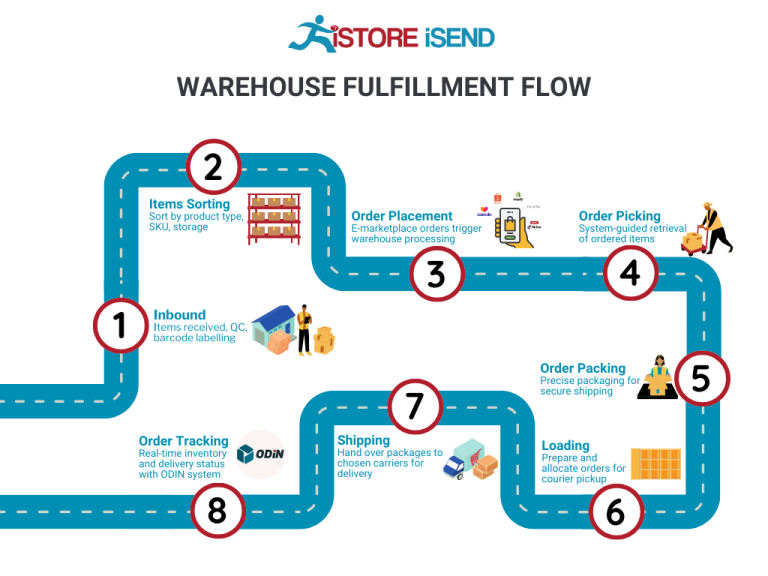
The importance of efficient order picking cannot be overstated. Inaccuracies in this step can lead to order errors, resulting in customer dissatisfaction and increased returns. Employing methods such as batch picking (where multiple orders are picked simultaneously) or zone picking (where pickers are assigned specific areas of the warehouse) can significantly enhance efficiency. Additionally, training staff on best practices and utilizing technology like handheld scanners can further improve accuracy and speed.
4. Order Packing
After items are picked, the next phase is order packing. This step involves securely packaging the products for shipment to ensure they arrive at the customer’s door in pristine condition. Effective packing not only protects items but also enhances the unboxing experience for customers. Key considerations during this step include using the right materials (e.g., bubble wrap, packing peanuts) and ensuring that the packing slips and invoices are included.
The importance of proper packing cannot be overlooked. Well-packed orders minimize the risk of damage during transit, which can lead to costly returns and customer dissatisfaction. Furthermore, branding opportunities—such as branded boxes or personalized thank-you notes—can enhance customer loyalty and encourage repeat business. Utilizing packing software can help streamline this process by suggesting optimal packing solutions based on order size and weight.
5. Shipping & Delivery
The final step in the order fulfillment process is shipping and delivery. Once orders are packed, they are handed off to shipping carriers for delivery to the customer. Key terms associated with this step include shipping labels and tracking numbers, which provide visibility into the order’s journey.
Shipping and delivery are critical for customer satisfaction, as they directly influence how quickly customers receive their orders. Offering multiple shipping options (e.g., standard, expedited) can cater to diverse customer needs. Moreover, integrating with shipping software can help businesses compare rates, print labels, and track shipments efficiently, ensuring that customers receive timely updates about their orders.
In conclusion, mastering the order fulfillment process from receiving inventory to shipping and delivery is essential for e-commerce success. Each step plays a vital role in ensuring customer satisfaction and operational efficiency, ultimately driving sales and growth for your business. By implementing best practices and leveraging technology, businesses can create a streamlined fulfillment process that enhances the overall customer experience.
Comparing Fulfillment Models: In-House vs. 3PL vs. Dropshipping
Comparison of Fulfillment Models
| Model | Who Handles Inventory | Best For (Business Stage) | Key Advantage | Key Disadvantage |
|---|---|---|---|---|
| In-House Fulfillment | The business itself | Startups to Mid-sized Firms | Greater control over inventory and processes | Higher overhead costs |
| Third-Party Logistics (3PL) | A third-party logistics provider | Growing to Large Businesses | Scalable and flexible logistics solutions | Less control over fulfillment processes |
| Dropshipping | Suppliers or manufacturers | New Businesses or Low-Capital Startups | Low startup costs and inventory risk | Lower profit margins and potential shipping delays |
In-House Fulfillment
In-house fulfillment refers to the practice of managing all aspects of the order fulfillment process within your business. This model involves maintaining your own warehouse, managing inventory, picking, packing, and shipping orders to customers. For startups and mid-sized firms, this approach provides a high degree of control over operations, which can lead to better quality assurance and customer service. Companies can optimize their processes to meet specific needs, such as custom packaging or faster shipping times. However, this model also comes with significant disadvantages, notably higher overhead costs associated with labor, warehousing, and technology. As businesses grow, the complexities of managing fulfillment in-house can become burdensome, potentially leading to inefficiencies and scalability issues.
Third-Party Logistics (3PL)
Third-party logistics (3PL) involves outsourcing the fulfillment process to a specialized logistics provider. This model is particularly advantageous for growing businesses and larger organizations that require scalable solutions. 3PL providers typically offer a comprehensive suite of services, including warehousing, inventory management, order processing, and shipping. This allows businesses to focus on their core operations, such as marketing and product development, while leveraging the expertise and resources of logistics professionals. One of the key advantages of 3PL is its scalability; businesses can quickly adjust their logistics operations to accommodate seasonal demand fluctuations or business growth without the need to invest heavily in infrastructure. However, the downside is that businesses relinquish some control over the fulfillment process, which can lead to inconsistencies in service quality or delays if the 3PL provider does not meet expectations.
Dropshipping
Dropshipping is a fulfillment model where the retailer does not keep goods in stock but instead transfers customer orders and shipment details to a supplier or manufacturer, who then ships the products directly to the customer. This model is particularly appealing to new businesses or entrepreneurs with limited capital, as it eliminates the need for inventory investment and reduces the risks associated with unsold stock. Dropshipping allows for a wide range of product offerings without the overhead costs of warehousing and fulfillment. However, the key disadvantage of this model lies in the lower profit margins, as suppliers typically charge higher prices to account for their handling of logistics. Additionally, reliance on third-party suppliers can lead to potential shipping delays and quality control issues, as the retailer has less oversight over the fulfillment process. As a result, businesses must ensure they partner with reliable suppliers to maintain customer satisfaction.
A Deep Dive into Amazon FBA: Pros, Cons, and Who It’s For
Understanding Fulfillment by Amazon (FBA)
Fulfillment by Amazon (FBA) is a service provided by Amazon that allows sellers to store their products in Amazon’s fulfillment centers. Amazon takes care of storage, packaging, and shipping, enabling sellers to leverage Amazon’s vast logistics network. With FBA, products become eligible for Amazon Prime and other Amazon services, which can significantly enhance visibility and sales potential.
How FBA Works
-
Setting Up an FBA Account: Sellers first need to create an Amazon seller account. They can then enroll in FBA by selecting the products they wish to fulfill through Amazon.
-
Shipping Products to Amazon: Sellers send their inventory to Amazon’s fulfillment centers. They must label their products according to Amazon’s specifications, which can include barcodes for tracking.
-
Storage and Inventory Management: Once received, Amazon stores the products in their warehouses. Sellers can monitor their inventory levels through the Amazon seller dashboard.
-
Order Processing: When a customer places an order for a product listed with FBA, Amazon handles the entire fulfillment process. This includes picking the product from the shelf, packing it, and shipping it directly to the customer.
-
Customer Service and Returns: Amazon also manages customer service and returns for FBA products, relieving sellers of these responsibilities.
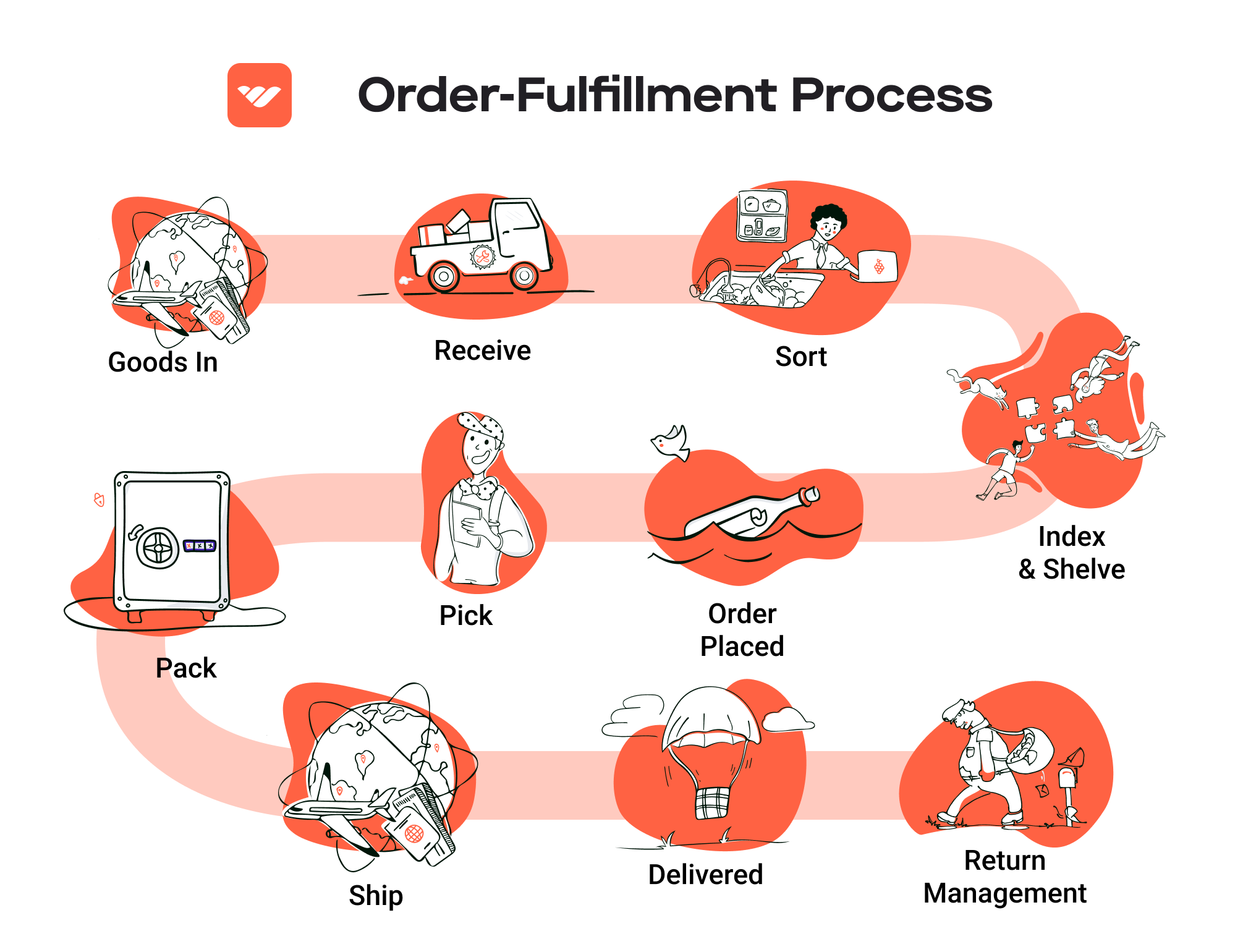
Pros of Using FBA
-
Prime Eligibility: One of the most significant advantages of FBA is that products become eligible for Amazon Prime. This status can increase sales, as Prime members often prefer items that qualify for free two-day shipping.
-
Customer Trust: Products fulfilled by Amazon benefit from the trust associated with the Amazon brand. Customers feel more secure purchasing items that are backed by Amazon’s customer service and return policies.
-
Multi-Channel Fulfillment: FBA allows sellers to fulfill orders not only from Amazon but also from other sales channels (like their own websites or eBay). This can streamline operations and consolidate inventory management.
-
Time Savings: By outsourcing storage, packaging, and shipping to Amazon, sellers can focus more on other aspects of their business, such as marketing and product development.
-
Scalability: FBA enables sellers to scale their business without the need for significant investment in warehousing or logistics. As sales grow, Amazon can handle increased order volumes seamlessly.
Cons of Using FBA
-
High Fees: While FBA offers many advantages, it comes at a cost. Sellers are subject to various fees, including storage fees for inventory stored in Amazon’s warehouses and fulfillment fees for each order processed. These can significantly cut into profit margins, especially for low-cost items.
-
Strict Inventory Rules: Amazon has specific policies regarding inventory management, including minimum performance standards and guidelines for storage limits. Sellers must stay compliant, or they risk incurring additional fees or account suspensions.
-
Commingling Risks: FBA products may be commingled with inventory from other sellers. This can pose risks, such as receiving returns that do not belong to the seller or issues with counterfeit products. Sellers can opt out of commingling, but this may increase storage fees.
-
Limited Control: When using FBA, sellers relinquish some control over the fulfillment process. This can lead to challenges if there are issues with order accuracy, shipping delays, or inventory management.
-
Long-Term Storage Fees: If inventory does not sell within a specified timeframe, Amazon imposes long-term storage fees. This encourages sellers to maintain optimal inventory levels but can also create pressure to discount or liquidate unsold products.
Who is FBA Best For?
FBA is particularly well-suited for certain types of sellers and businesses:
-
Small to Medium-Sized Businesses: For entrepreneurs or small businesses looking to scale without the overhead of managing logistics, FBA can provide a cost-effective solution.
-
Brands with Established Demand: Sellers with products that already have a proven track record can benefit the most from FBA, as they can leverage Amazon’s logistics to fulfill growing demand.
-
Sellers of High-Volume Products: Businesses selling items with high turnover rates can maximize the benefits of FBA, as the fees become more manageable when spread over a larger number of sales.
-
Multi-Channel Sellers: Brands that sell across various platforms can use FBA to streamline their fulfillment process, allowing them to offer consistent service across channels.
-
Retail Arbitrage and Resellers: Those who purchase products at a lower price to resell can benefit from FBA’s logistics, enabling them to quickly turn over inventory.
In conclusion, while Fulfillment by Amazon offers numerous advantages that can help sellers enhance their operations and scale their businesses, it is essential to weigh these benefits against the potential drawbacks. Sellers should carefully consider their specific circumstances, product types, and business goals before committing to FBA.
Core Services Offered by Fulfillment Centers
Inventory Management & Warehousing
Inventory management is the backbone of any successful e-commerce operation. Fulfillment centers provide robust inventory management systems that help businesses track stock levels, manage reorder points, and optimize storage space. This service typically includes advanced Warehouse Management Systems (WMS) that enable real-time visibility into inventory status.
Benefits:
– Enhanced Accuracy: Automated systems reduce human error in tracking inventory, ensuring that e-commerce businesses have accurate data on stock levels.
– Cost Efficiency: Efficient warehousing reduces the costs associated with overstocking or stockouts, allowing businesses to maintain optimal inventory levels without tying up excessive capital in unsold goods.
– Scalability: As your business grows, fulfillment centers can easily adjust to increased inventory demands without the need for significant capital investment in additional warehousing facilities.
Pick and Pack Services
Pick and pack services involve the selection of products from inventory and the assembly of those items into customer orders. This process is crucial for ensuring that the right items are shipped to the right customers in a timely manner. Fulfillment centers employ trained staff and sophisticated systems to streamline this process, often utilizing barcodes and scanners to enhance accuracy.
Benefits:
– Speed: Fulfillment centers can process orders faster than most in-house operations, which is critical for meeting customer expectations for quick shipping.
– Reduced Labor Costs: By outsourcing pick and pack services, e-commerce businesses can save on labor costs associated with hiring, training, and managing warehouse staff.
– Quality Control: Fulfillment centers implement quality checks during the pick and pack process to minimize errors, ensuring that customers receive the correct products and enhancing overall customer satisfaction.
Kitting and Assembly
Kitting and assembly services involve bundling multiple products into a single package or preparing items for sale as a complete unit. This can include everything from assembling product kits for promotional offers to preparing complex items that require multiple components to be packaged together.
Benefits:
– Increased Sales Opportunities: Kitting allows businesses to offer bundled products at a discount, encouraging customers to purchase more items at once, which can lead to higher average order values.
– Streamlined Operations: By outsourcing the kitting process, businesses can focus on their core competencies, such as product development and marketing, rather than the complexities of assembly.
– Improved Customer Experience: Well-packaged kits can enhance the unboxing experience for customers, creating a positive impression and increasing the likelihood of repeat purchases.
Returns Management (Reverse Logistics)
Returns management, often referred to as reverse logistics, is the process of handling product returns from customers. Effective returns management is critical for maintaining customer satisfaction and managing the costs associated with returned merchandise. Fulfillment centers offer specialized services to streamline this process, including inspection, restocking, and managing exchanges or refunds.
Benefits:
– Efficiency: Fulfillment centers can quickly process returns, minimizing the time products spend in the returns pipeline and allowing businesses to get items back into inventory faster.
– Data Insights: Many fulfillment centers provide analytics on return reasons, helping e-commerce businesses identify trends and address issues with product quality or customer satisfaction.
– Customer Retention: A smooth and hassle-free returns process enhances customer trust and loyalty, making them more likely to shop with your brand again despite a return experience.
In summary, partnering with a fulfillment center can dramatically enhance operational efficiency and customer satisfaction for e-commerce businesses. Each of the core services—inventory management, pick and pack, kitting and assembly, and returns management—plays a vital role in streamlining logistics and supporting growth. By leveraging these services, e-commerce businesses can focus on scaling their operations while leaving the complexities of fulfillment to the experts.
How to Choose a Fulfillment Partner: A 6-Point Checklist
Location & Warehouse Network
Importance:
The geographic location of your fulfillment partner’s warehouses is crucial for optimizing shipping times and costs. A partner with strategically placed warehouses can reduce transit times to your customers, enhancing their experience and potentially lowering shipping fees.
Questions to Ask:
– Where are your warehouses located, and how do they align with my customer base?
– Do you offer regional or national shipping options?
– How do you handle shipping to international locations?
Technology & Integrations
Importance:
In today’s e-commerce landscape, technology plays a pivotal role in streamlining operations. A fulfillment partner should have robust warehouse management systems (WMS) that integrate seamlessly with your existing e-commerce platforms, allowing for real-time inventory tracking, order processing, and analytics.
Questions to Ask:
– What technology do you use for inventory management and order fulfillment?
– Can your systems integrate with my e-commerce platform (e.g., Shopify, WooCommerce)?
– Do you offer real-time tracking for shipments and inventory levels?
Specializations (e.g., Cold Storage, Oversized Items)
Importance:
Depending on the nature of your products, you may require specific handling capabilities. For example, businesses dealing with perishables need cold storage facilities, while those selling furniture may require specialized handling for oversized items. Choosing a partner with the right expertise can prevent damage and ensure compliance with regulations.
Questions to Ask:
– What types of products do you specialize in handling?
– Do you have specific facilities for temperature-sensitive items?
– How do you manage fragile or oversized products during storage and shipping?
Scalability & Capacity
Importance:
As your business grows, your fulfillment needs will evolve. It’s essential to partner with a provider that can scale its operations in response to your growth, whether that means increasing storage space, handling more orders, or expanding into new regions.
Questions to Ask:
– How do you accommodate growth in demand, especially during peak seasons?
– What is your maximum capacity for storage and order fulfillment?
– Can you provide examples of how you’ve supported other clients during periods of rapid growth?
Pricing and Contracts
Importance:
Understanding the pricing structure and contract terms is vital to avoid hidden costs and ensure that the partnership is financially viable. Transparent pricing models will help you project costs accurately and maintain profitability.
Questions to Ask:
– What is your pricing model (e.g., per order, per pallet, monthly fees)?
– Are there any additional fees for services such as returns, packaging, or special handling?
– What are the terms of the contract, and is there flexibility for renegotiation based on performance?
Customer Support & Reviews
Importance:
Excellent customer support can make a significant difference in your fulfillment experience. A responsive partner can help resolve issues quickly, ensuring minimal disruption to your operations. Additionally, reviews and testimonials from other clients can provide insight into the partner’s reliability and service quality.
Questions to Ask:
– What type of customer support do you offer (e.g., dedicated account manager, 24/7 support)?
– Can you provide references or case studies from similar businesses?
– How do you handle disputes or issues that arise during the fulfillment process?
Conclusion
Choosing the right fulfillment partner is a strategic decision that can significantly impact your e-commerce business’s success. By following this checklist, you can ensure that you select a partner that aligns with your operational needs and growth ambitions. Take the time to conduct thorough due diligence, ask the right questions, and assess potential partners carefully to build a fruitful relationship that supports your business goals.
Understanding Fulfillment Pricing: A Breakdown of Common Fees
Initial Setup Fees
Initial setup fees are one-time charges that e-commerce businesses may incur when establishing a relationship with a fulfillment provider. These fees can cover a variety of services, such as account setup, integration with e-commerce platforms, and initial inventory processing. The cost can vary significantly depending on the complexity of your operations and the specific services required.
To calculate initial setup fees, fulfillment centers typically consider the following factors:
– Complexity of Integration: If you require advanced technology integration, such as API connections with multiple sales channels or custom software solutions, expect higher fees.
– Inventory Assessment: The time and resources needed to assess, categorize, and prepare your inventory for storage can add to the initial costs.
– Training and Onboarding: Some providers offer training sessions for your team on how to utilize their systems, which can also factor into the setup costs.
Receiving Fees
Receiving fees are charged by fulfillment centers when they accept and process your inventory. This fee usually covers the labor and resources required to unload, inspect, and store incoming products.
Calculating receiving fees involves:
– Volume of Inventory: The more items you send, the higher the receiving fee, as it takes more time and effort to process larger quantities.
– Condition of Inventory: If your products require additional handling (e.g., inspection for quality or repackaging), this may increase the receiving fee.
– Special Requirements: Certain products may need special handling or storage conditions, which can also affect the cost.
Storage Fees (per pallet/bin)
Storage fees are recurring charges based on the amount of space your inventory occupies within the fulfillment center. They are typically calculated on a per-pallet or per-bin basis and can vary depending on the type of goods stored.
Key considerations for calculating storage fees include:
– Space Utilization: Fulfillment centers charge based on the physical space your items occupy. Businesses can save on storage fees by optimizing packaging and using vertical space effectively.
– Type of Goods: Some items, particularly oversized or hazardous materials, may incur higher storage fees due to the specialized handling and storage requirements.
– Duration of Storage: If products remain in storage for an extended period, some providers impose additional long-term storage fees, incentivizing faster turnover.
Pick & Pack Fees (per item/order)
Pick & pack fees are charged for the labor involved in retrieving items from storage, packing them, and preparing them for shipment. These fees can vary widely based on the complexity and volume of orders.
Calculating pick & pack fees generally involves:
– Number of Items: The more items included in an order, the higher the pick & pack fee. Some providers may offer tiered pricing based on order volume.
– Packaging Requirements: If your products require special packaging (e.g., fragile items needing extra padding), this will likely increase the fee.
– Order Complexity: Orders with multiple SKUs or those that require kitting (combining multiple items into a single package) may incur additional charges.
Shipping Fees
Shipping fees are one of the most significant costs associated with fulfillment services, encompassing the charges for transporting packages from the fulfillment center to the customer’s address. These fees can vary based on several factors.
Key components in calculating shipping fees include:
– Shipping Carrier: Different carriers have varying rates, and many fulfillment centers negotiate bulk shipping rates, which can benefit your business.
– Destination: Shipping costs typically increase with distance. International shipments may incur additional customs fees and taxes.
– Package Weight and Dimensions: Carriers often charge based on the weight and size of the package. Ensuring your products are packaged efficiently can help reduce these costs.
Tips for Getting an Accurate Quote
To obtain an accurate quote from fulfillment providers, consider the following tips:
- Provide Detailed Information: Be clear about your inventory size, expected order volume, and any special requirements.
- Ask About All Fees: Ensure you understand all potential fees, including hidden costs such as long-term storage or seasonal surcharges.
- Request Custom Solutions: If your business has unique needs, discuss custom pricing options that reflect your specific circumstances.
- Compare Multiple Providers: Don’t settle for the first quote. Compare offers from different fulfillment centers to ensure you’re getting the best deal.
- Negotiate Terms: Many fulfillment centers are open to negotiation, especially if you anticipate high volumes or long-term contracts.
By understanding these common fulfillment pricing models and following these tips, you can make informed decisions that will help optimize your e-commerce operations and reduce costs as you scale your business.
Frequently Asked Questions (FAQs) about Fulfillment
1. What is the role of a fulfillment associate?
A fulfillment associate is responsible for managing the process of preparing and shipping customer orders. This includes picking items from inventory, packing them securely, labeling shipments, and ensuring that orders are dispatched accurately and on time. Their role is crucial in maintaining customer satisfaction and operational efficiency in e-commerce businesses.
2. What skills are essential for a fulfillment associate?
Key skills for a fulfillment associate include attention to detail, time management, and the ability to work in a fast-paced environment. Familiarity with warehouse management systems and basic computer skills are also important, as they often need to track inventory and process orders electronically.
3. How does a fulfillment center differ from a warehouse?
While both a fulfillment center and a warehouse store goods, the primary difference lies in their purpose. A warehouse is primarily for storage, whereas a fulfillment center is designed for processing and shipping orders directly to customers. Fulfillment centers are equipped with technology to manage inventory and streamline the order fulfillment process.
4. What is a 3PL (Third-Party Logistics)?
A 3PL, or third-party logistics provider, is a company that offers logistics services to businesses, including warehousing, order fulfillment, and shipping. By outsourcing these services to a 3PL, businesses can focus on their core operations while leveraging the expertise and infrastructure of the logistics provider to manage their supply chain more efficiently.
5. How much do fulfillment services cost?
Fulfillment service costs can vary widely based on factors such as order volume, storage space, and specific services required. On average, businesses can expect to pay a combination of storage fees (typically per pallet or cubic foot) and fulfillment fees (per order or per item shipped). It’s essential to get quotes from several providers to find a service that aligns with your budget and needs.
6. What are common challenges faced by fulfillment associates?
Fulfillment associates may encounter several challenges, including high order volumes during peak seasons, maintaining accuracy in order picking, and managing time effectively to meet shipping deadlines. Additionally, they may need to adapt to changes in technology and processes as businesses scale.
7. What technology do fulfillment associates use?
Fulfillment associates typically use warehouse management systems (WMS) to track inventory levels, manage order processing, and optimize picking routes. They may also use handheld devices or mobile apps to scan items and update order statuses in real time, ensuring accuracy and efficiency.
8. How can businesses improve their fulfillment processes?
To enhance fulfillment processes, businesses can invest in technology to automate inventory management, implement best practices for packing and shipping, and provide ongoing training for fulfillment associates. Regularly reviewing workflows and seeking feedback from team members can also help identify areas for improvement.
9. What are the benefits of hiring a fulfillment associate?
Hiring a fulfillment associate can lead to improved order accuracy, faster shipping times, and enhanced customer satisfaction. They help streamline operations, allowing businesses to scale effectively while ensuring that orders are processed efficiently and accurately.
10. How can I train my fulfillment associates effectively?
Effective training for fulfillment associates should include a combination of hands-on experience, standard operating procedures, and ongoing support. Providing training on the specific warehouse management systems and equipment used, along with safety protocols, can ensure that associates are well-prepared to handle their responsibilities. Regular performance evaluations and feedback sessions can also aid in their development and efficiency.
Conclusion: Is Outsourcing Fulfillment the Right Move for Your Business?
Assessing the Benefits of Outsourcing Fulfillment
Outsourcing your fulfillment can be a game changer for your e-commerce business. By leveraging a fulfillment service, you can save significant time and resources that would otherwise be spent on managing inventory, packing orders, and shipping. This allows you to focus on what you do best—growing your business and enhancing customer experience. With the demands of today’s consumers for fast and reliable shipping, having a dedicated partner can ensure that your orders are fulfilled accurately and promptly.
Scalability is another key advantage of outsourcing fulfillment. As your business grows, so do your logistics needs. A fulfillment partner can seamlessly scale operations to meet increasing order volumes, especially during peak seasons. This flexibility allows you to expand your product offerings without the burden of investing in additional warehouse space or staff.
Moreover, fulfillment services bring expertise and advanced technology to the table. Many providers utilize sophisticated inventory management systems and have established relationships with carriers, enabling them to optimize shipping routes and reduce costs. This expertise not only enhances operational efficiency but also improves your overall customer satisfaction.
However, the success of outsourcing fulfillment hinges on selecting the right partner. Consider factors such as their experience in your industry, technology capabilities, and customer service reputation. A misalignment in these areas can hinder your growth rather than support it.
Call to Action
To determine if outsourcing fulfillment is the right next step for your business, conduct a thorough audit of your current shipping process. Assess your operational bottlenecks, shipping costs, and customer feedback. This analysis will provide valuable insights into whether a fulfillment partner could enhance your efficiency and scalability. If you find that your logistics are holding back your growth potential, it may be time to explore fulfillment options that align with your business goals.
Important Disclaimer
⚠️ Important Disclaimer
The information in this guide is for educational purposes. Fulfillment services, pricing, and platform features change frequently. Always conduct your own due diligence and consult with providers directly before making business decisions.
